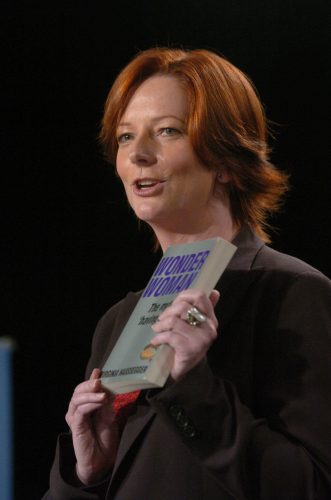If you pause the video footage, and look very closely, you can just see it. A hole the size of a pinprick. It’s there in the middle of the scarred skin that’s smeared across Ameneh Bahrami’s left eye, sealing it closed.
The man who threw the acid that blinded her believes she can ”secretly see” through this tiny perforation. But she can’t. Ameneh will never see again. Her other eye is little more than a slit, covered in a film of pus.
Ameneh’s once pretty, young face, with its classic Iranian beauty, is now hideous. Her skin is a moonscape of sinuous scars and red-raw patches. So this is what skin looks like when it curdles and melts?
It is very, very hard to look at Ameneh. Yet, it’s even harder to hear what she has to say.
The case of Ameneh Bahrami has been big news in Iran, and indeed across the world, for the past couple of weeks. She hit the headlines after announcing to a Tehran court that she wanted her attacker punished with blinding.
The shock that’s followed is perhaps not because this brutally disfigured young woman demanded ”an eye for an eye”. Rather, it’s because the judge has agreed to her request.
Any day now, Majid Mohavedi, who doused Ameneh in acid because she wouldn’t marry him, will be held down and slowly blinded. He will have sulphuric acid dropped into each of his eyes until all light is snuffed out, and his eyeballs are burnt to death.
It is the most despicable torture imaginable. And difficult to understand how any state can sanction such a punishment, much less carry it out. But this is perfectly legal under Islamic sharia law and the principle of quisas, which allows for retribution for a crime that has been proven.
In this particular case, there is no doubt about Mohavedi’s guilt. Soon after dousing Ameneh, he turned himself in to police and calmly told them what he’d done.
Mohavedi had pursued Ameneh since they were at university together. He followed her continuously, hounded her, and eventually said he would kill her if she didn’t agree to marry him.
Such was Mohavedi’s sense of ownership and power over the woman he wanted that when she rejected him he chose to disfigure her in a manner so shocking that no other man would ever want her. And in that he has probably succeeded.
But an even more frightening aspect of this dreadful crime is that Mohavedi insists his action was motivated by love.
Throughout the protracted legal case Mohavedi has apparently shown no sign of remorse. Such is the cold conviction of the righteous.
But righteousness is double-edged here. The victims of acid attacks are invariably viewed with extreme sympathy by the wider community. Yet in Ameneh’s case her demand for a punishment of slow, painful blinding has horrified many would-be sympathisers. Even though, by law, she is entitled to request this.
Although the sharia principle of quisas emphasises forgiveness over retribution, Ameneh believes she has good reason to insist her attacker is made to suffer a pain and fate equal to her own. She says it’s not about revenge, but about preventing this from happening to someone else. To that end, she has enthusiastically given numerous media interviews to make sure men are hearing the message: do this, and you will suffer, badly.
As inhumane as Mohavedi’s punishment might be, and inconceivable within a Western jurisdiction, it would seem such a brutal response to acid attacks may be necessary.
The alarming increase in the use of acid as a quick and insidiously effective weapon against women and girls shows no sign of stopping. And the problem goes well beyond Iran, to Pakistan, Afghanistan, India and Bangladesh.
Some 25 years ago it was relatively unheard of, but now there is an acid attack every two days in Bangladesh, with nearly 3000 attacks over the past decade. In India, attempts by the National Commission for Women to regulate the easy and cheap access to acid, and to increase the punishment, have been stalled for years and thwarted, yet again, just this week.
Mostly the attacks are against young women, and the majority are over marriage disputes or proposals, and property or money. Not only are the helpless victims splashed, doused or squirted – as in the recent case in Afghanistan when several schoolgirls were injured – but in some cases women have been forced by their enraged husbands to drink acid.
The cruelty is mind-numbing. But unlike Ameneh, not all acid victims feel the need to call for retribution of equal cruelty, despite their moral right to do so.
Bangladeshi acid-attack survivor Fozilitun Nessa stunned a Canberra audience this week during her International Women’s Day speech. In Australia as a guest of UNIFEM, Fozilitun explained how she accepted her acid disfigurement as her fate.
She’s not interested in revenge. Instead she just wants freedom from violence against women. All women.
It’s such a humble request. So why does it seem like too much to ask?






